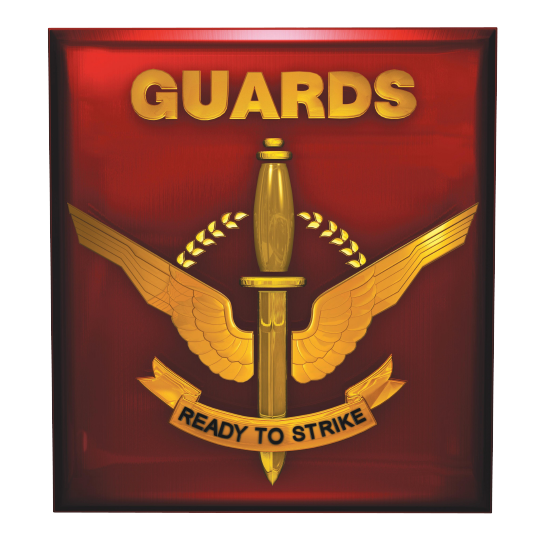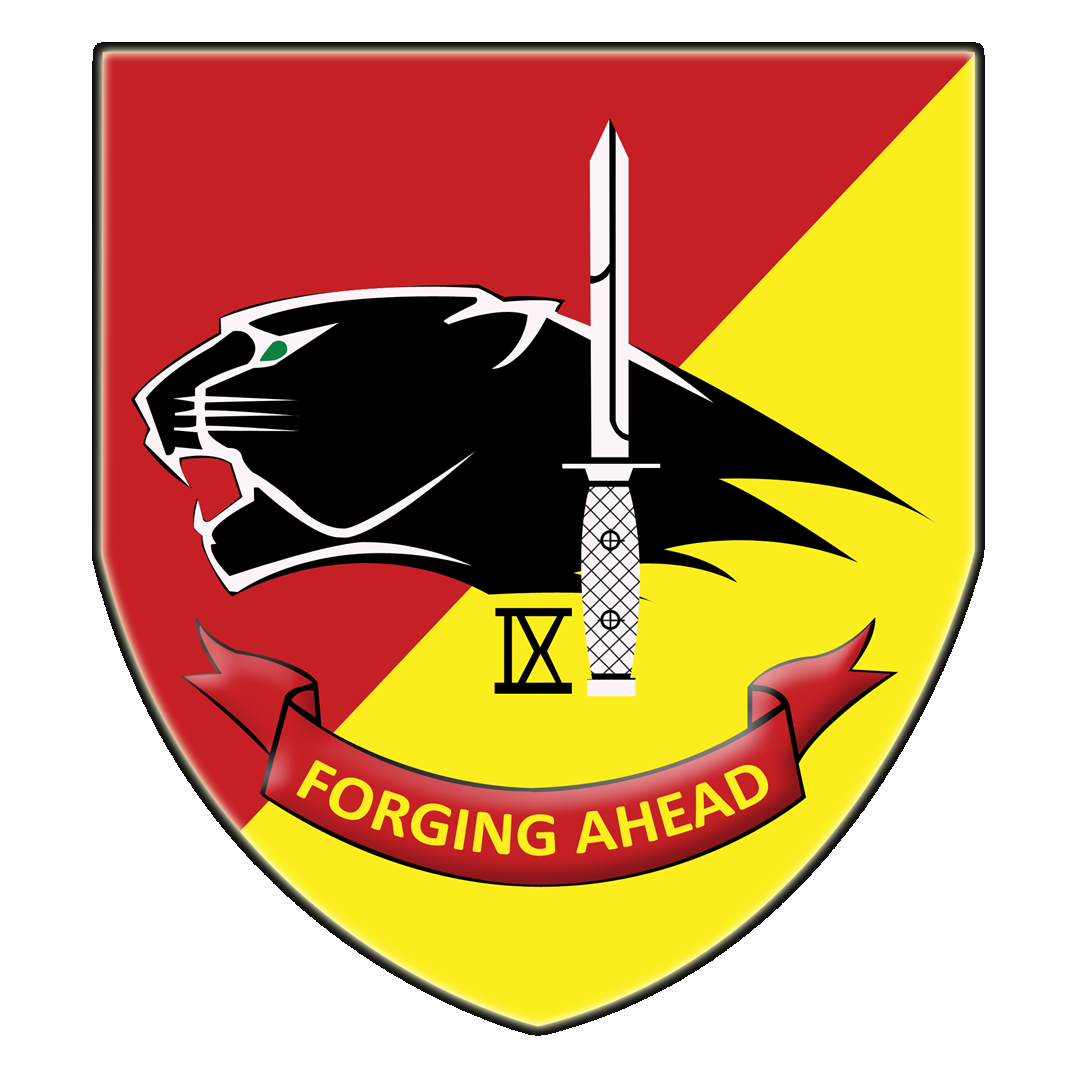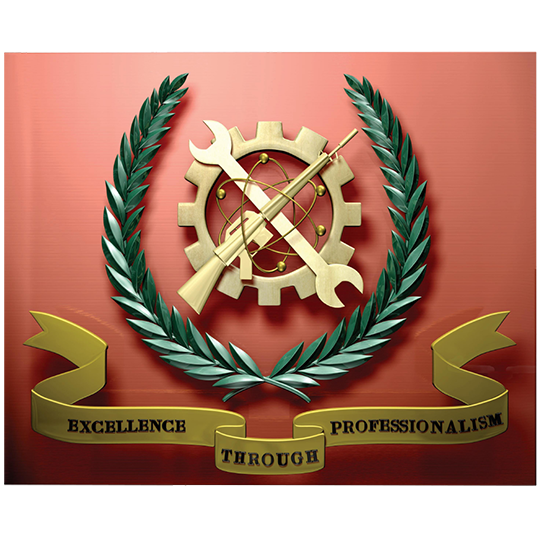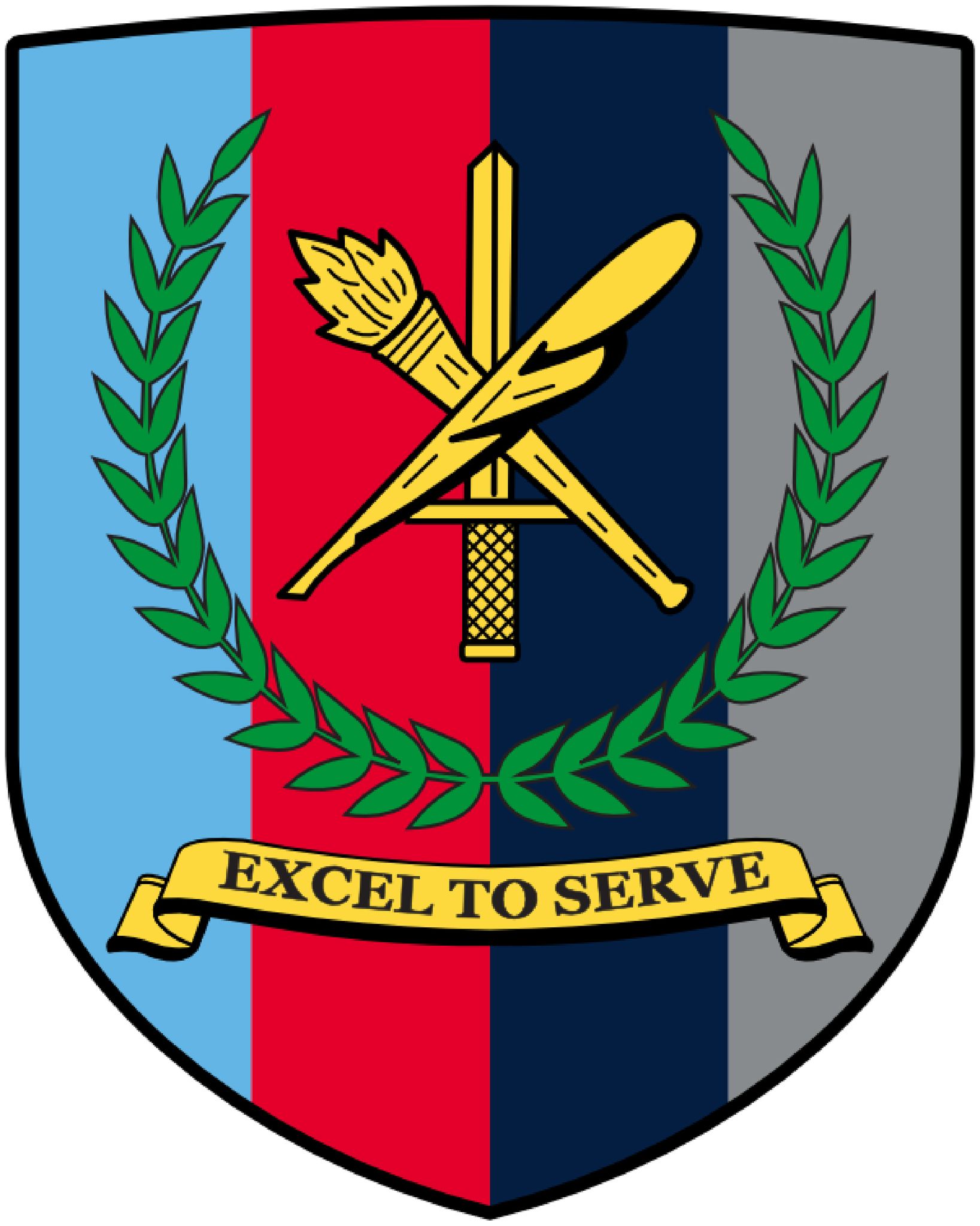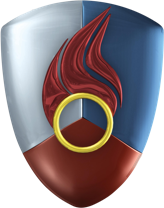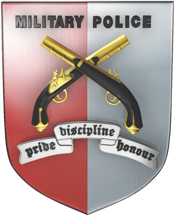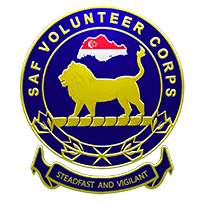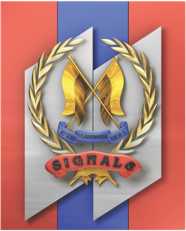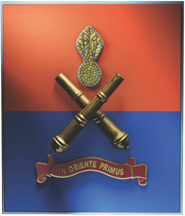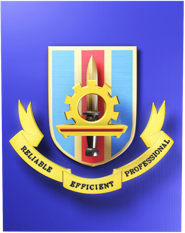 Web Content Viewer
Web Content Viewer
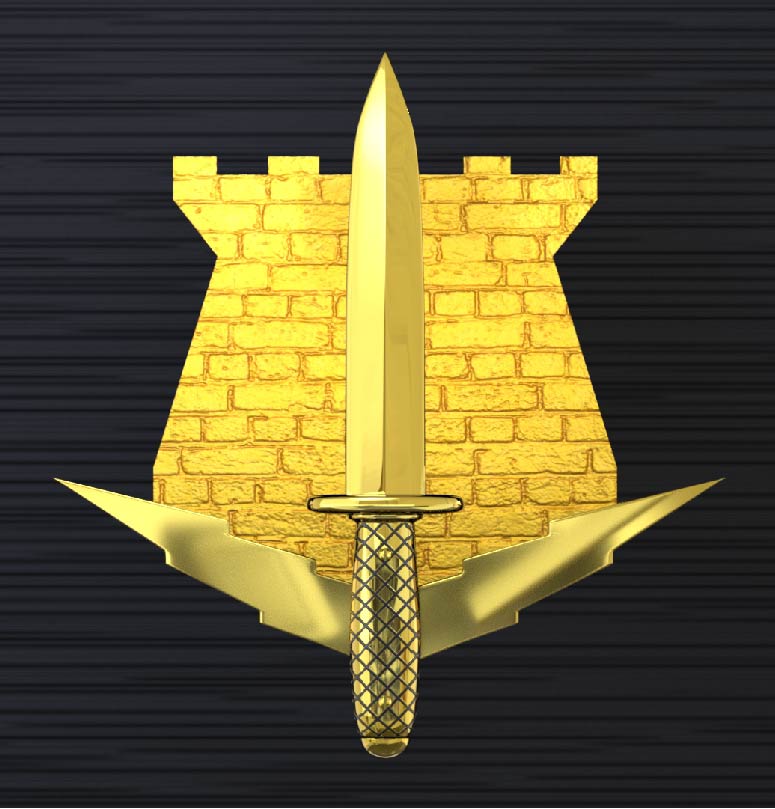
The Combat Engineers are highly versatile and skilled professionals capable of employing state-of-the-art machinery to deliver responsive engineer support to the army. The combat Engineers is an indispensable force in the battlefield because we provide our Army with mobility, counter-mobility and survivability advantage to overcome the enemy.
Mobility
When the Army needs to go, Combat Engineers are there first paving the way for the rest of the Army. We convert the “NO GO” terrain to “GO” Terrain by bridging gaps and clearing minefields to facilitate speedy advance of our forces into the enemy’s depth to secure a swift and decisive victory.
Counter-mobility
We are also capable of converting the “GO” terrain to “NO GO” terrain by constructing obstacles such as minefields and anti-tank ditches to impede the enemy’s movement
Survivability
With our earth moving capabilities, we construct trenches, drainage systems and other related infrastructure to enhance the survivability of our troops during operation
Field Engineers
The Field Engineers provide mobility, counter-mobility and survivability support to the Brigades and Divisions.
Bridging Engineers
The Bridging Engineers play the pivotal role in defence of Singapore by providing bridging support to the main force, allowing swift and decisive control of the terrain across the battle field.
Explosive Ordnance Disposal (EOD) Engineers
The Explosive Ordnance Disposal Engineers perform the critical role to respond to any explosive ordnance, and to perform security sweep for key national events.
Armoured Engineers
The Armoured Engineers operate at the speed of Armour operations with the precision in details of Combat Engineers. They support the Army in full spectrum of operations and operate a fleet of operationally ready Armoured Engineer equipment.
Chemical, Biological and Radiological Defence (CBRD) Engineers
The Chemical, Biological and Radiological Defence Engineers perform the critical role to respond to any CBR hazards, and to provide CBR coverage for key national events.
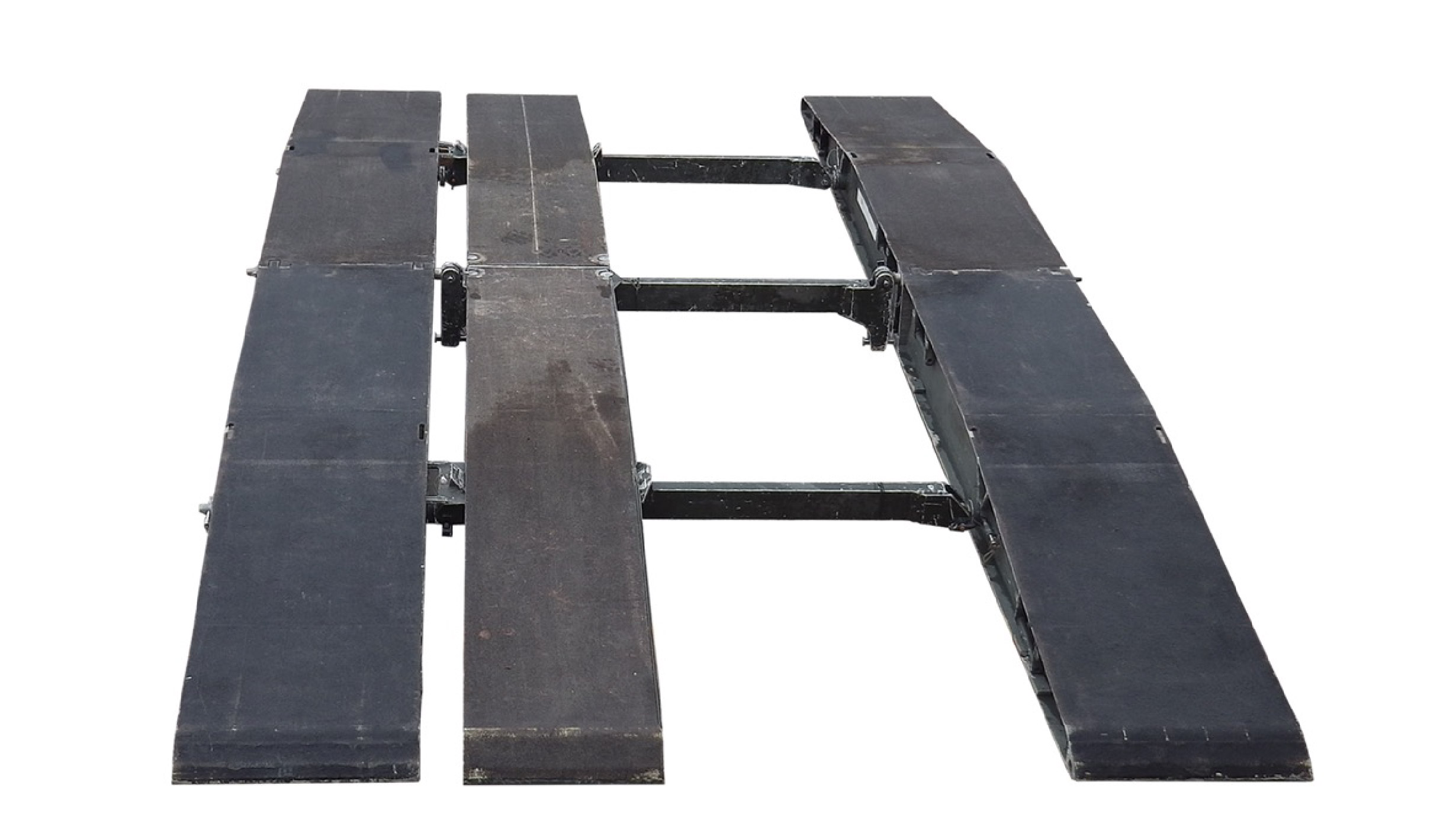
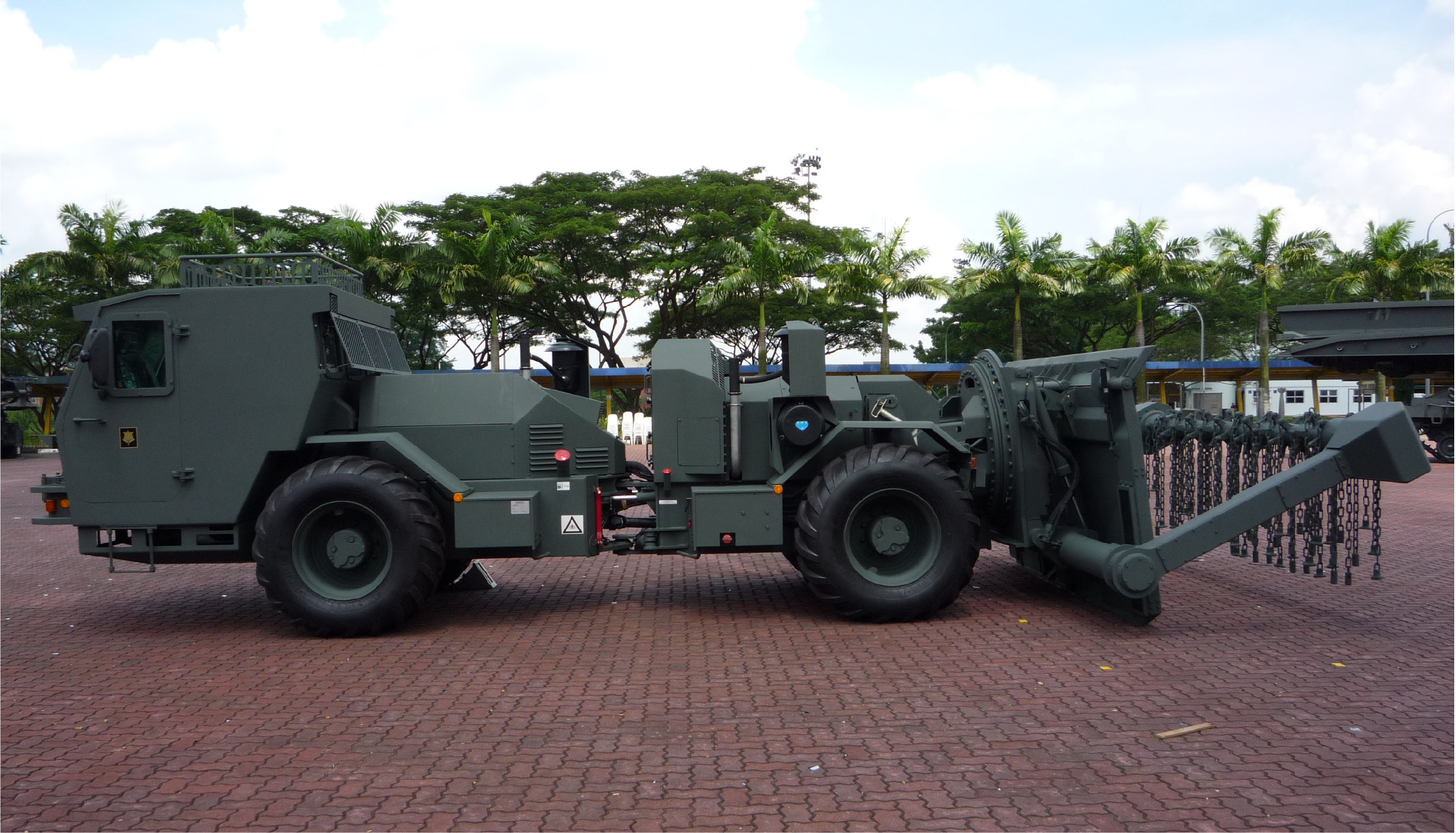
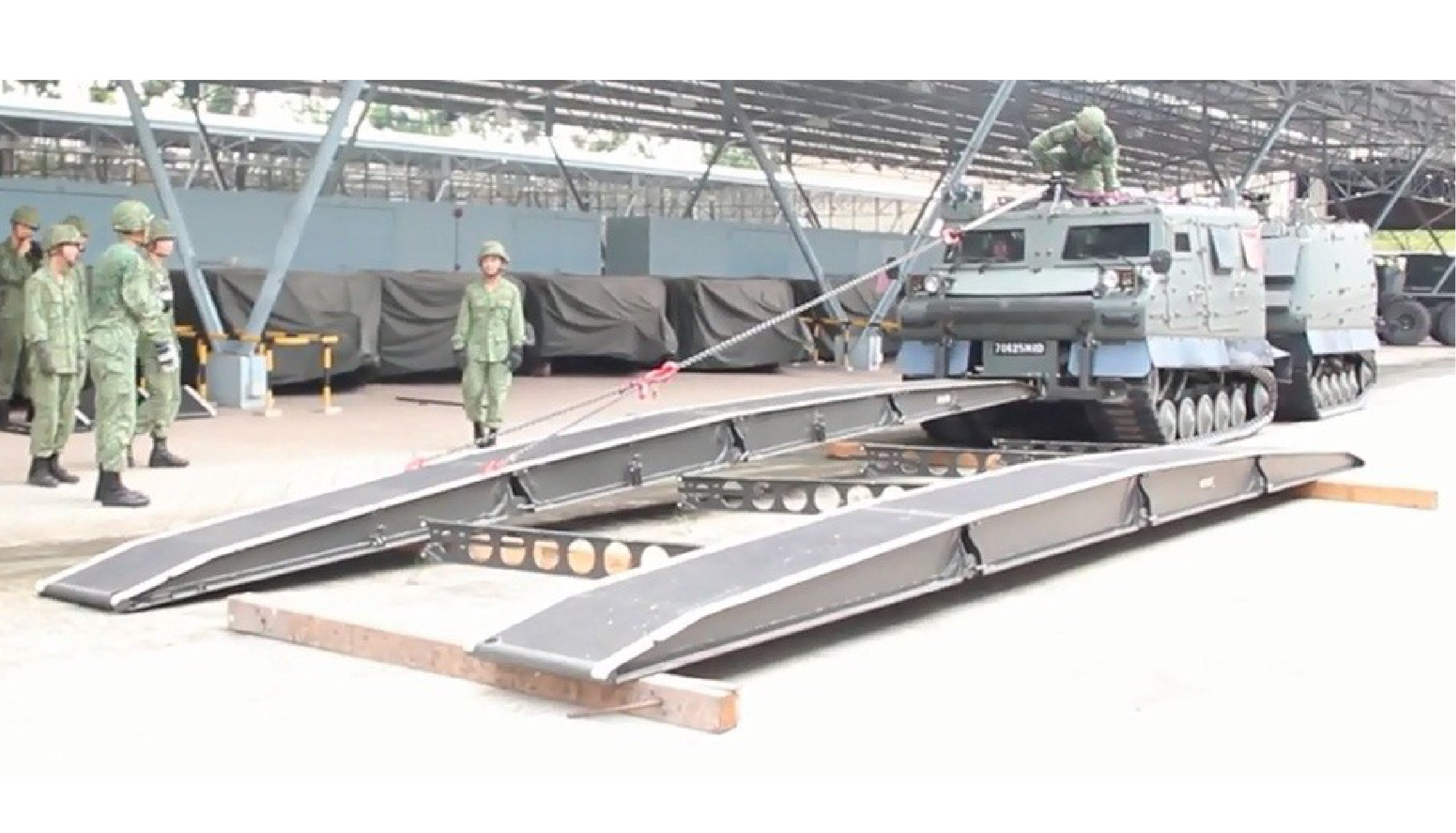
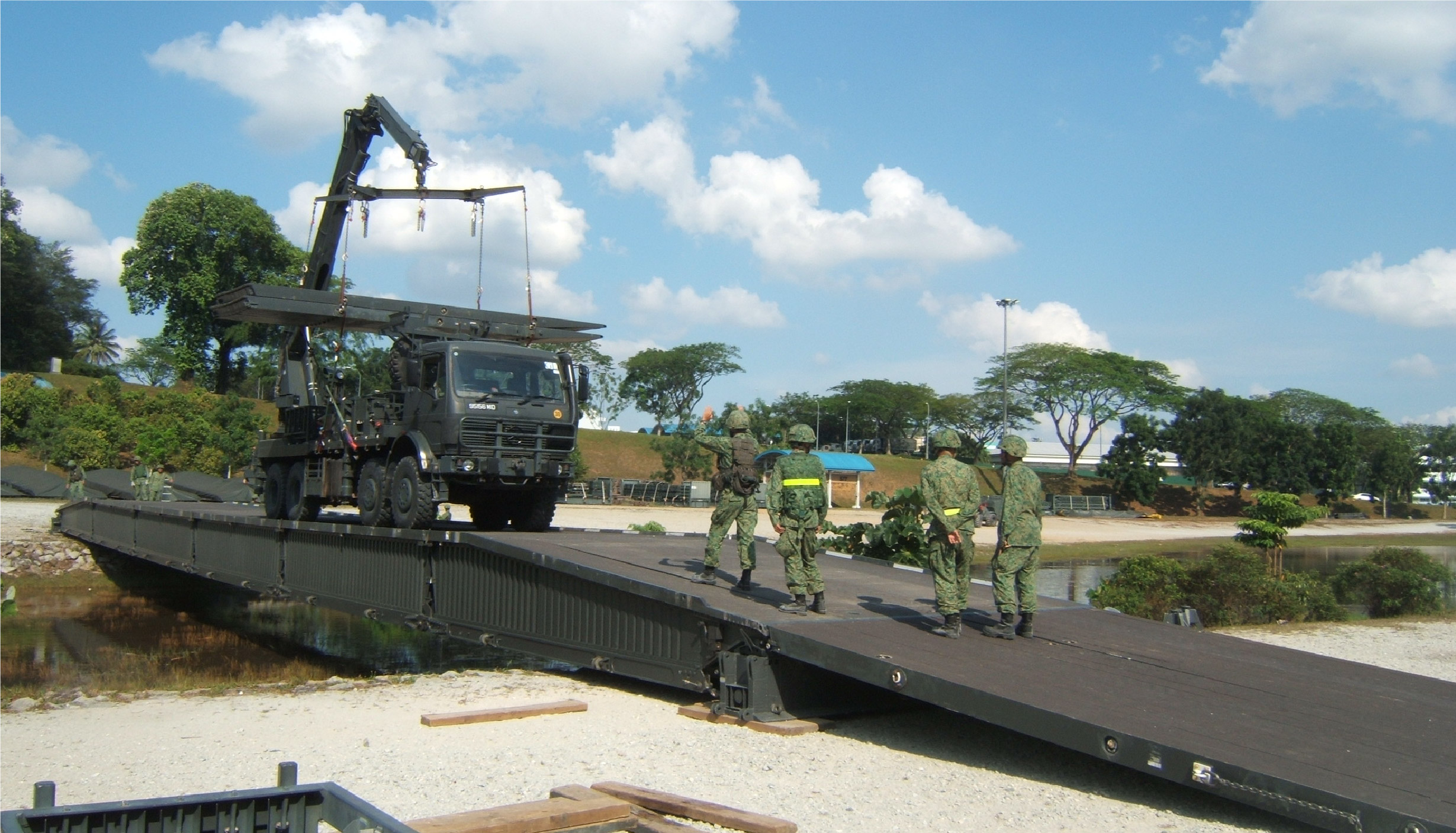
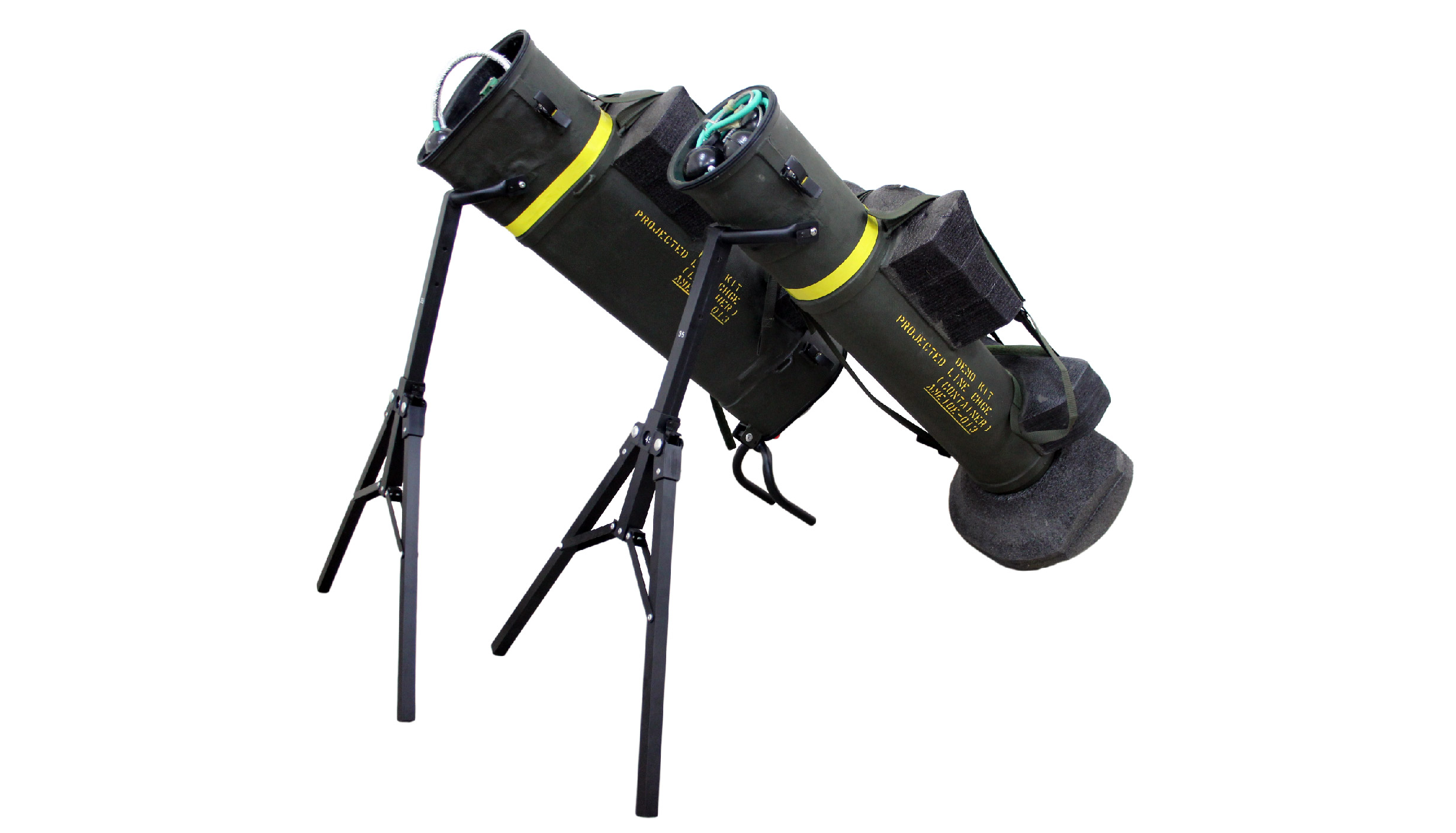
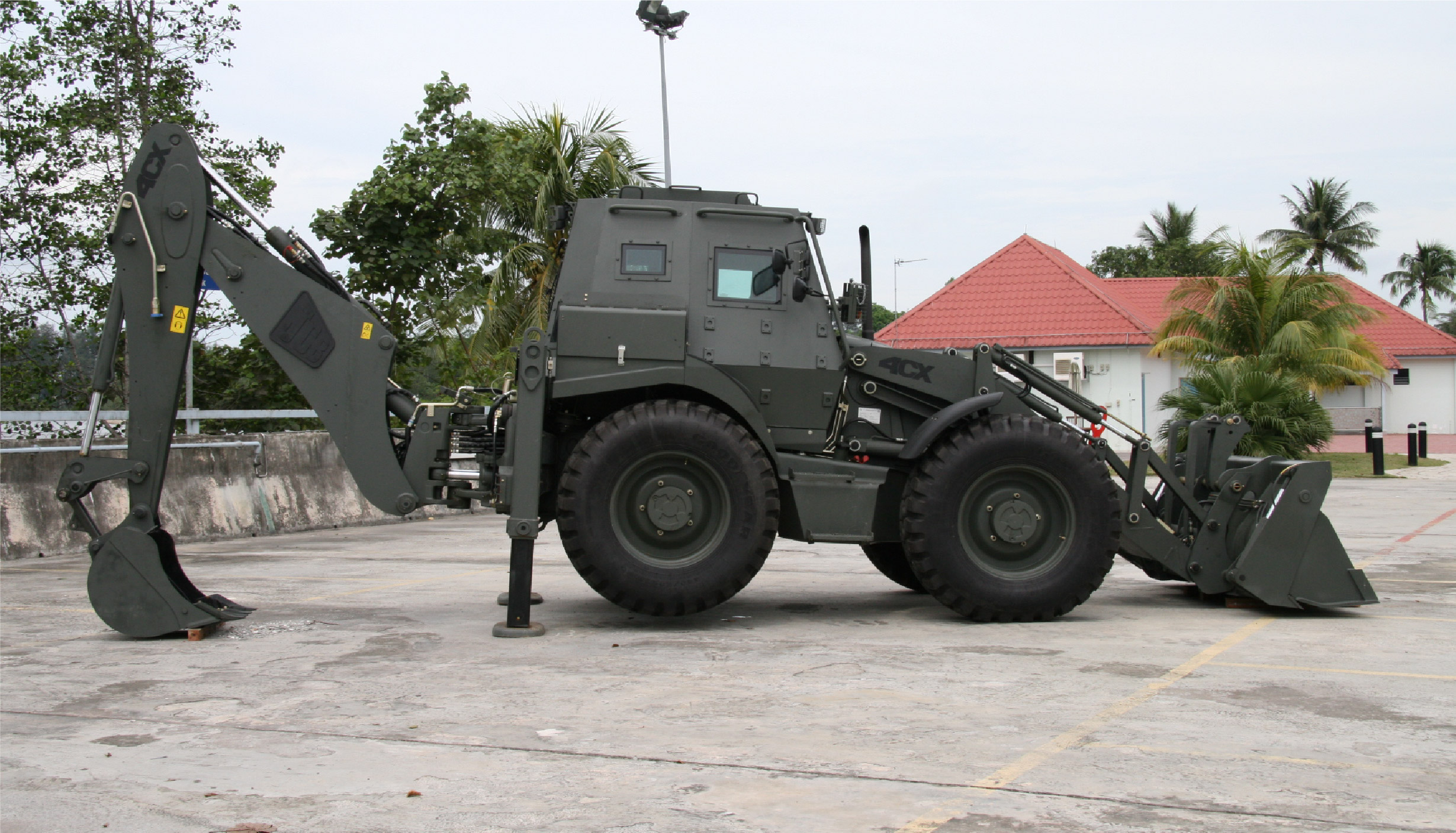
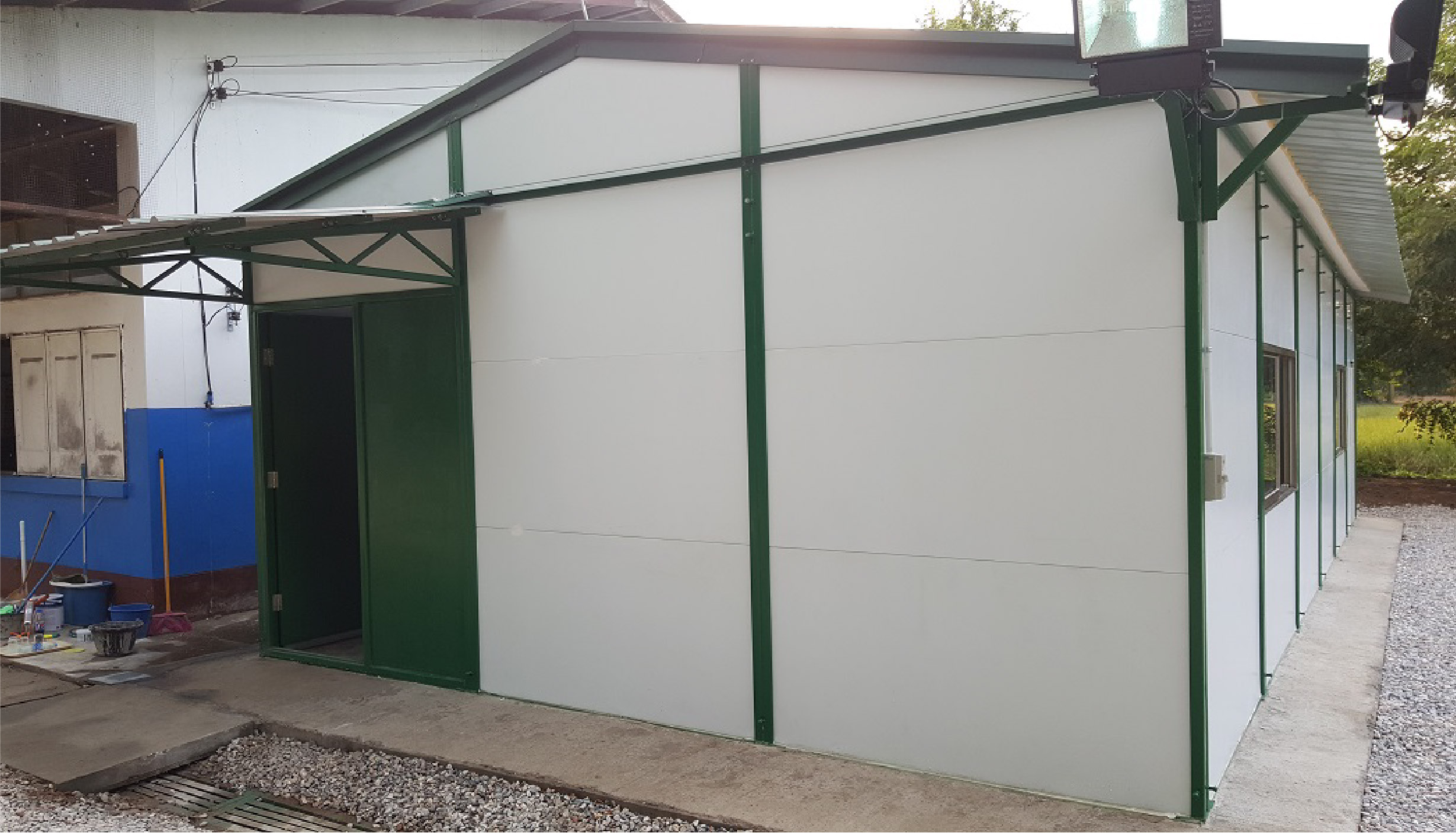
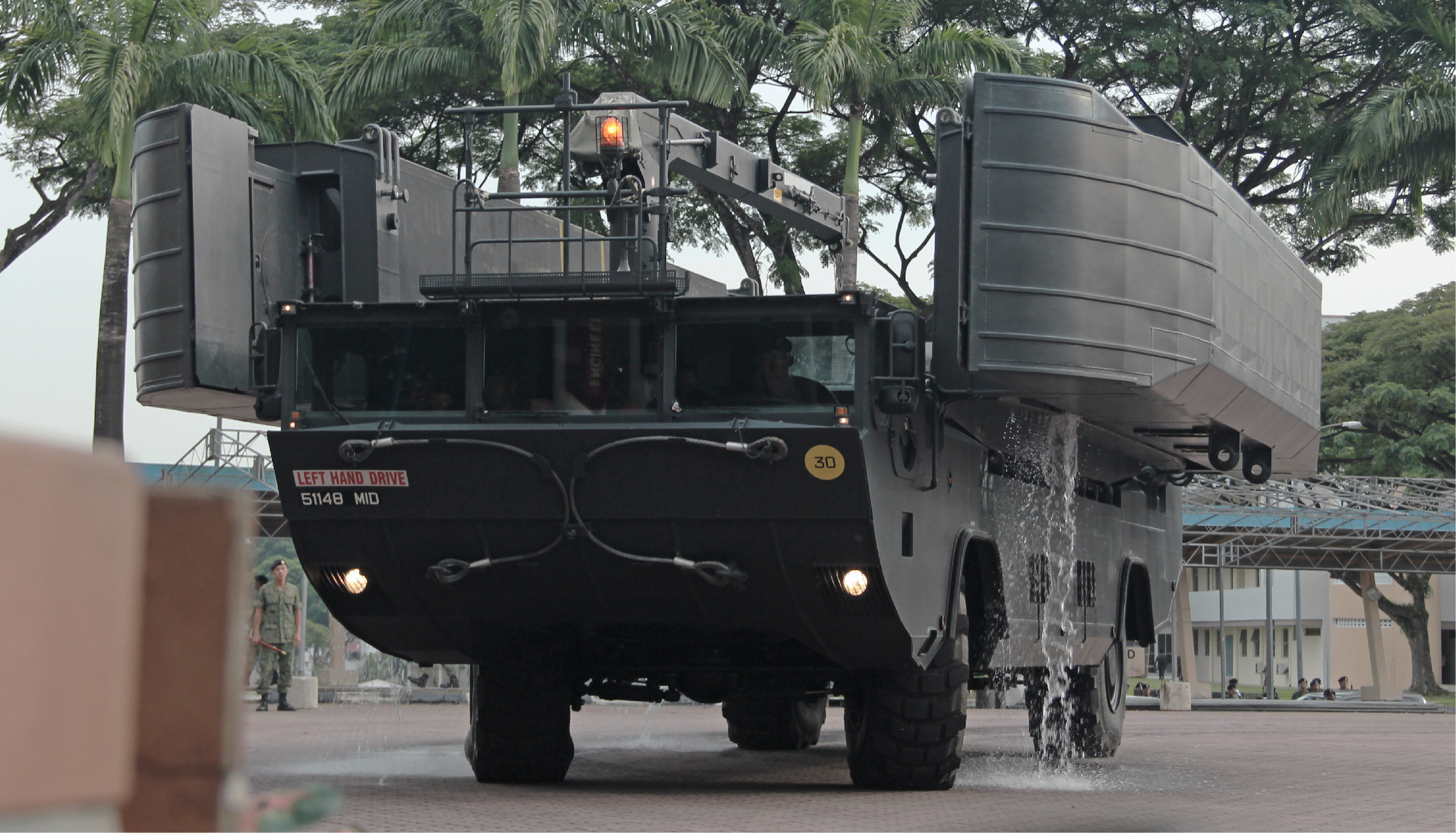

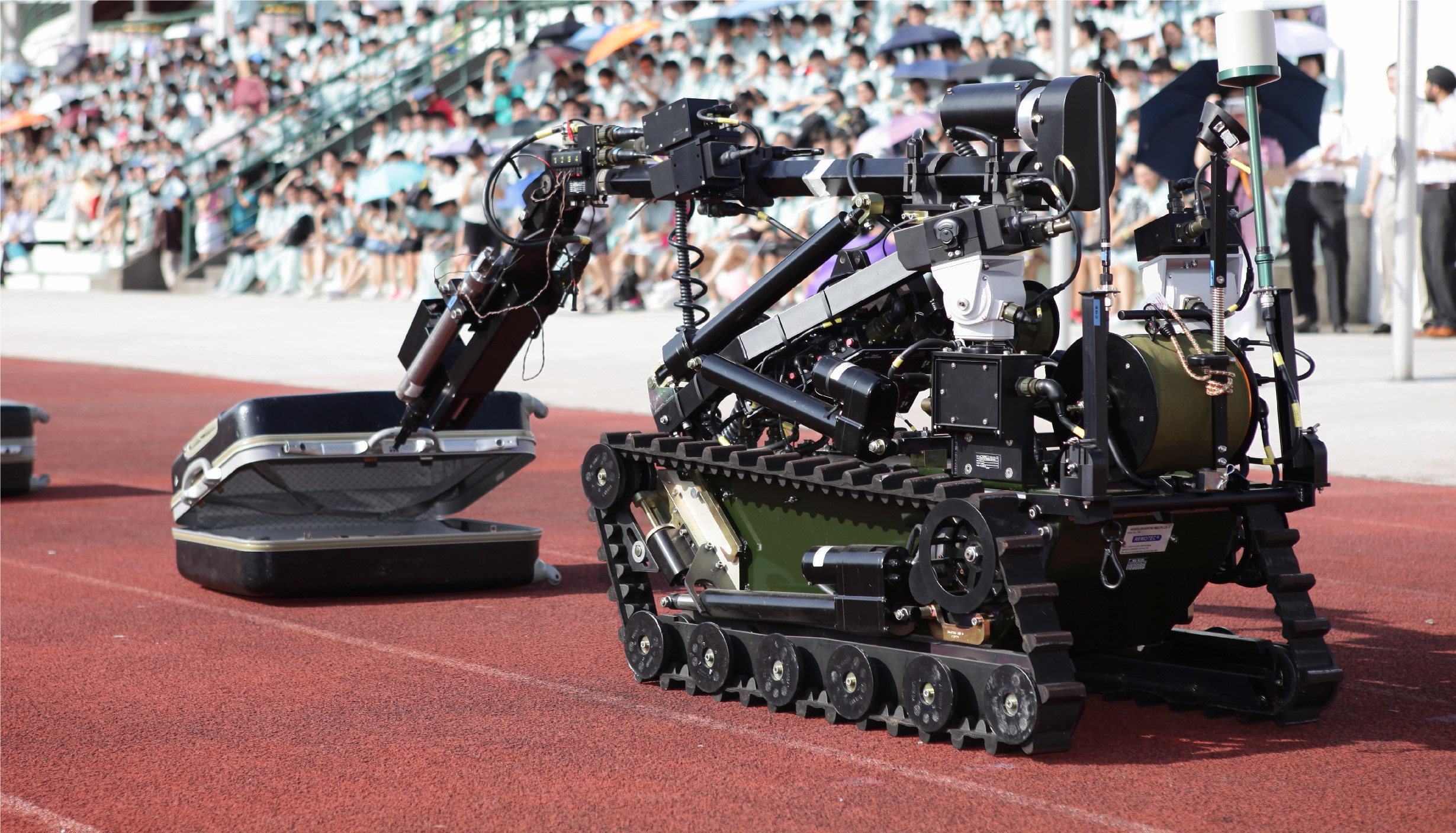
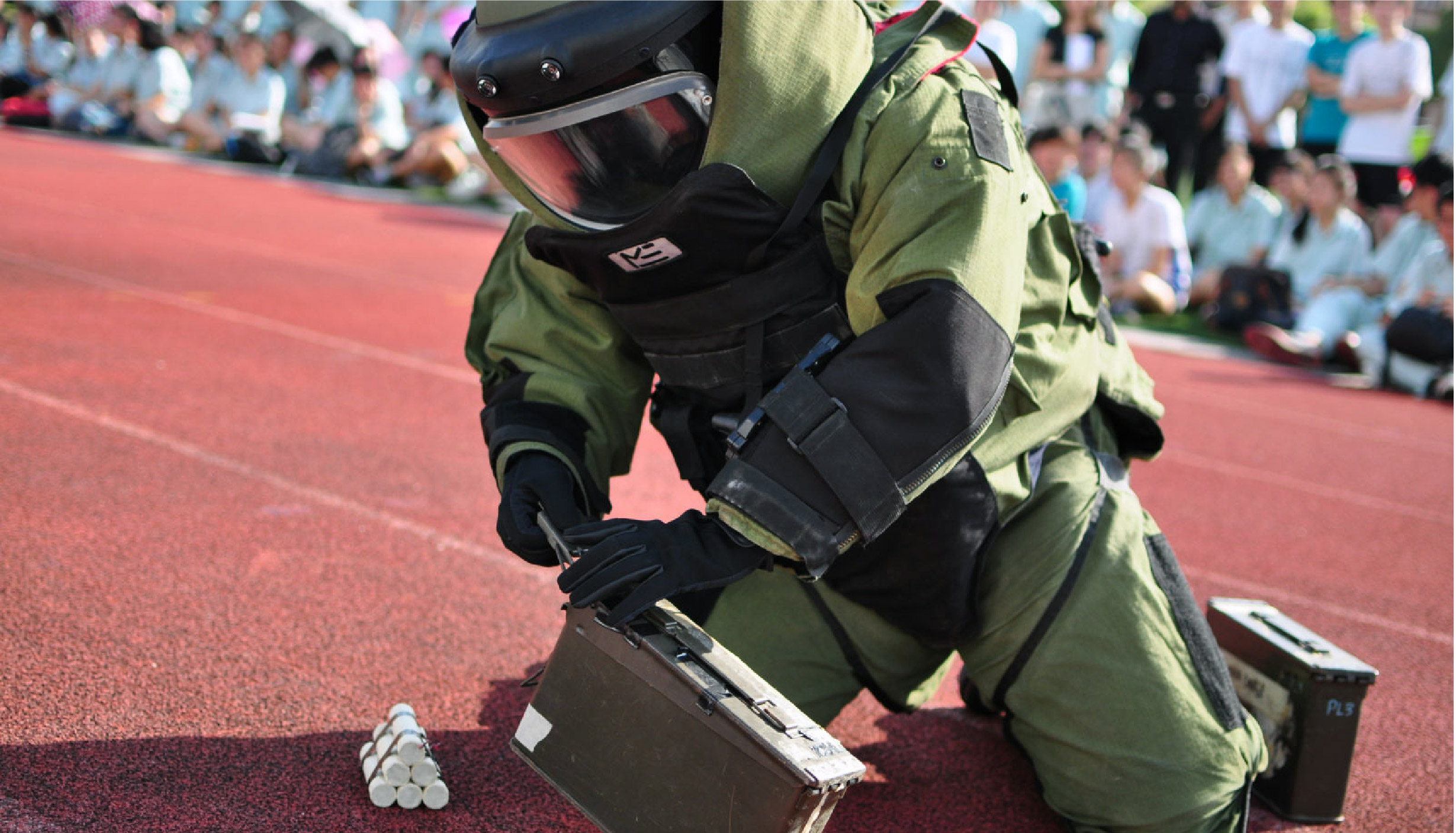
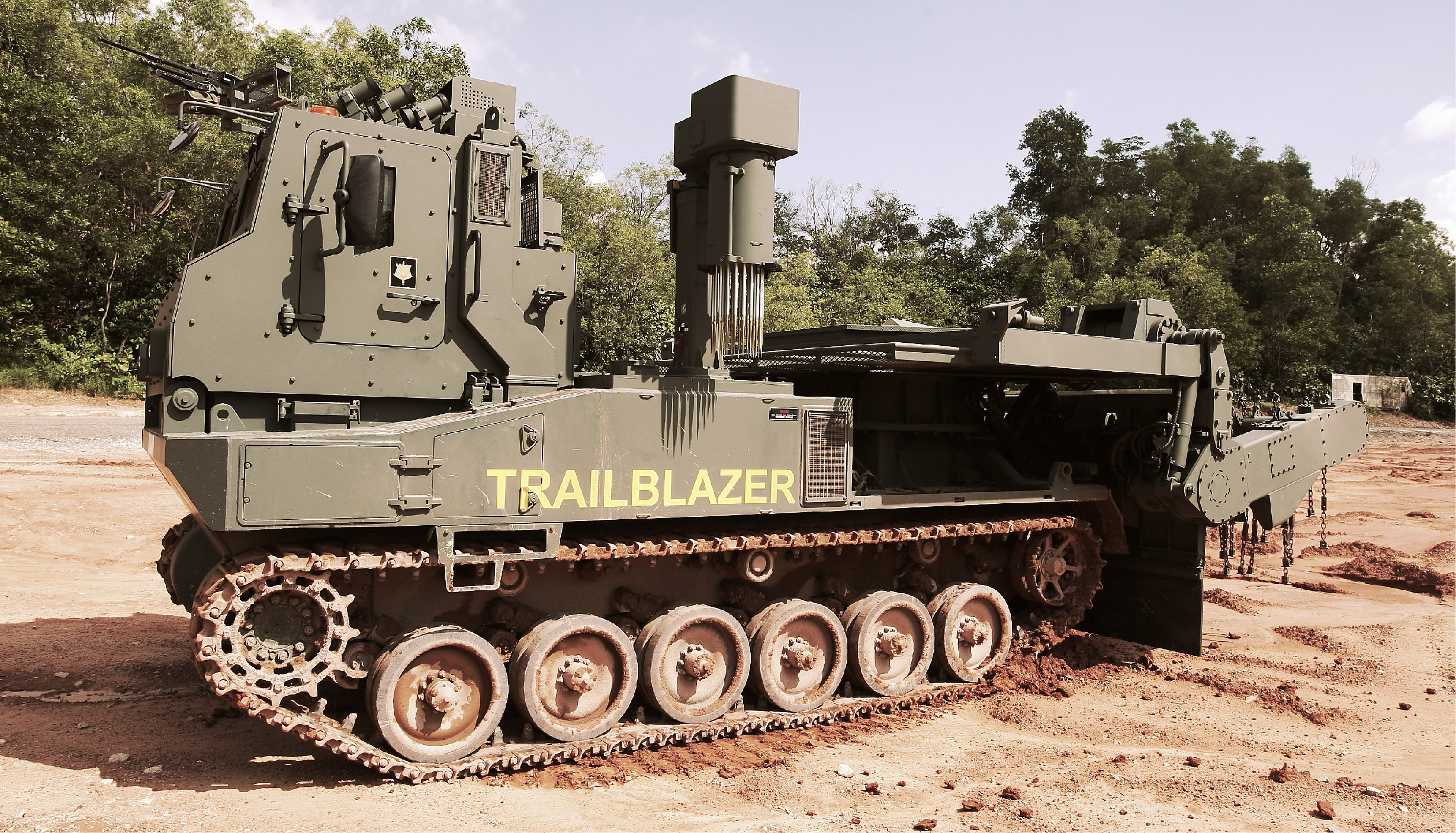
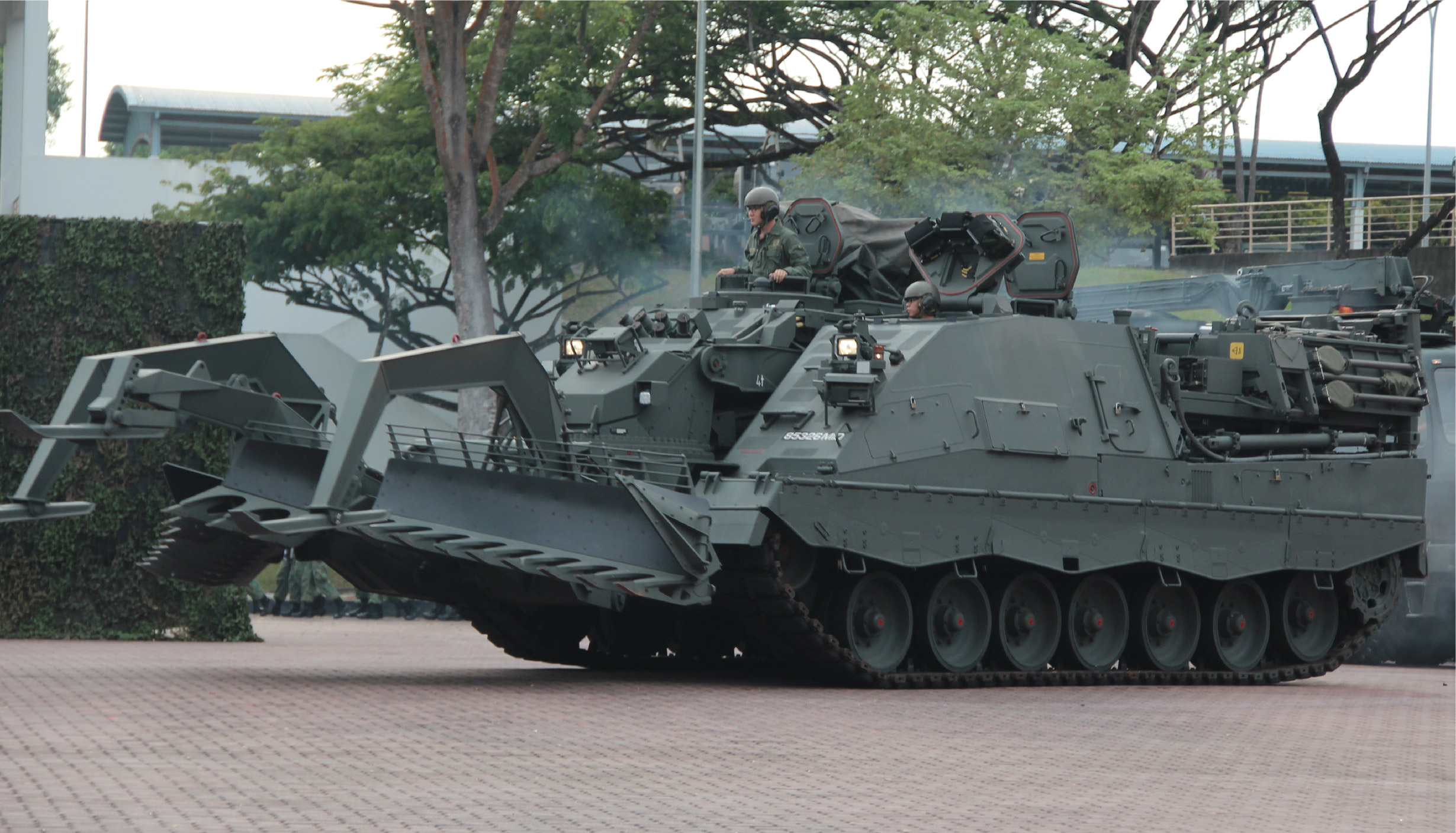
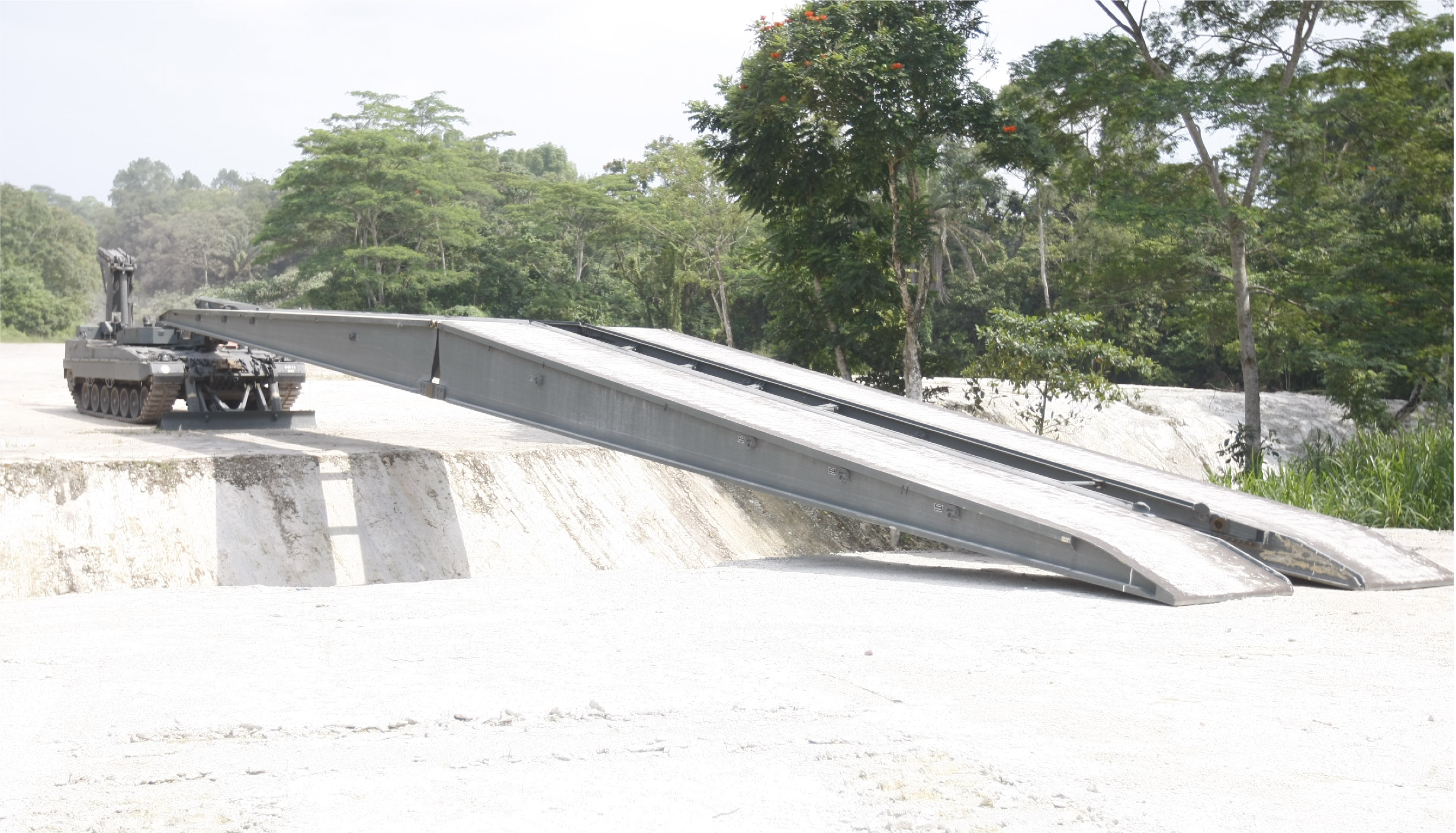
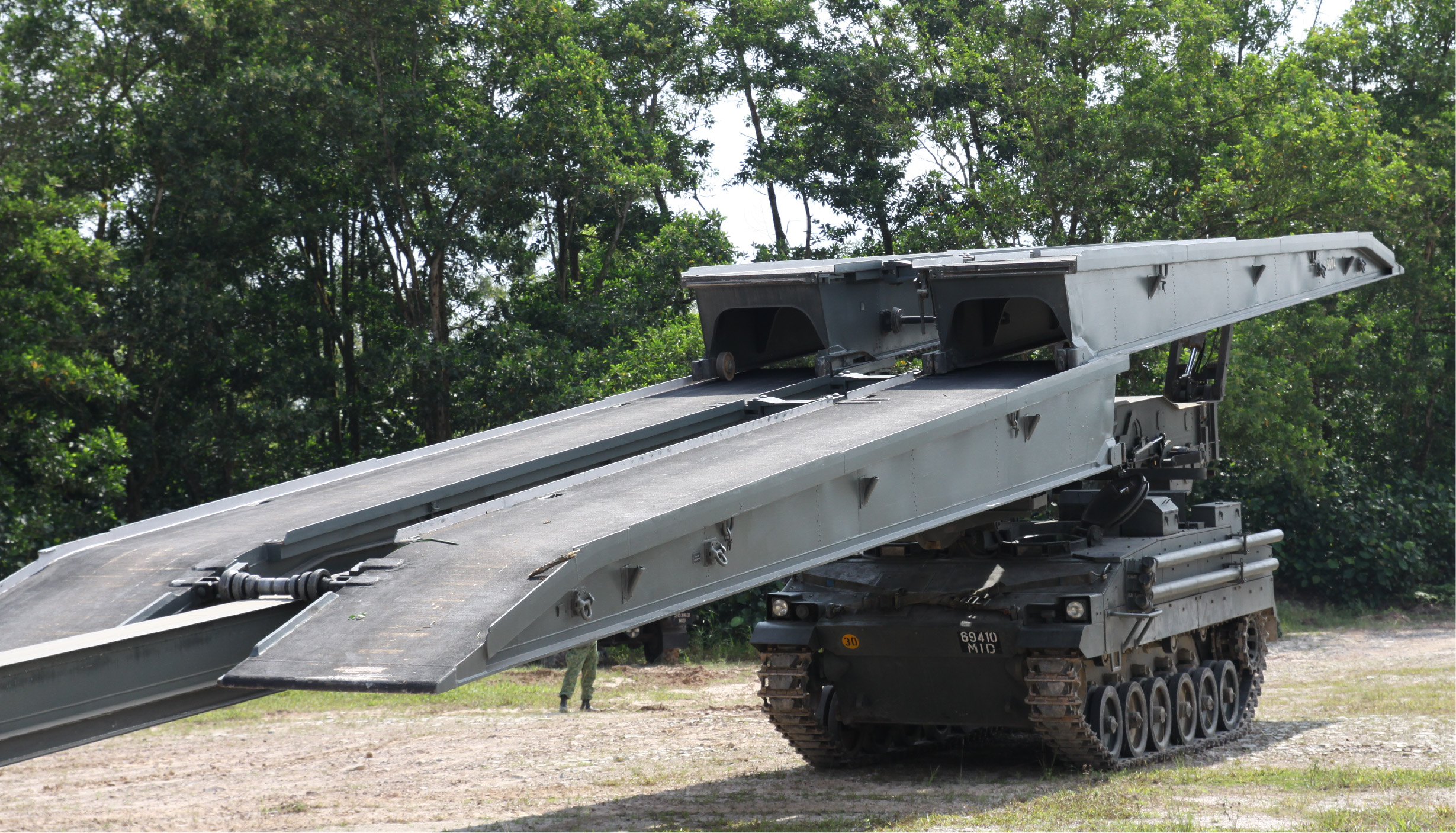
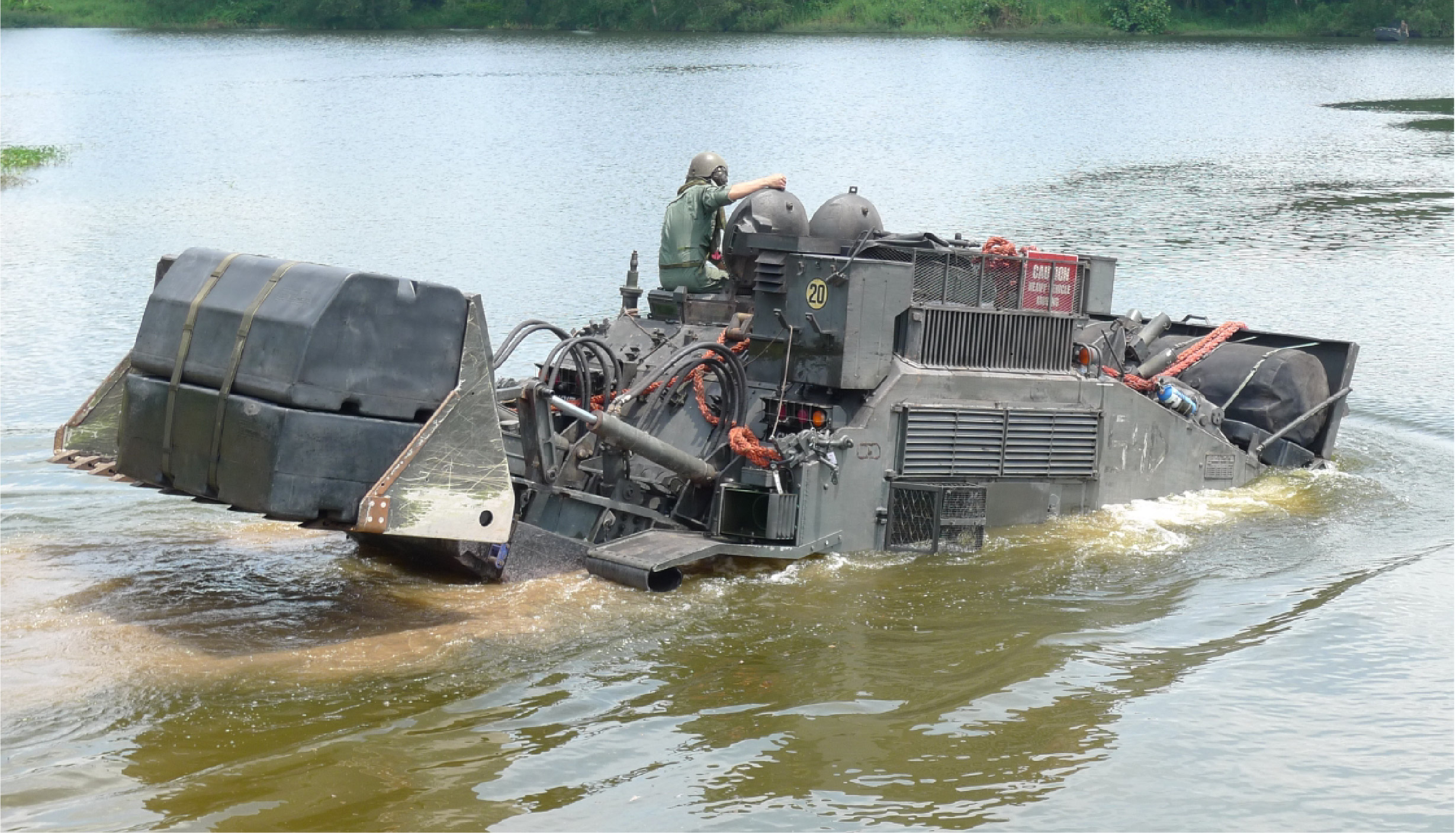
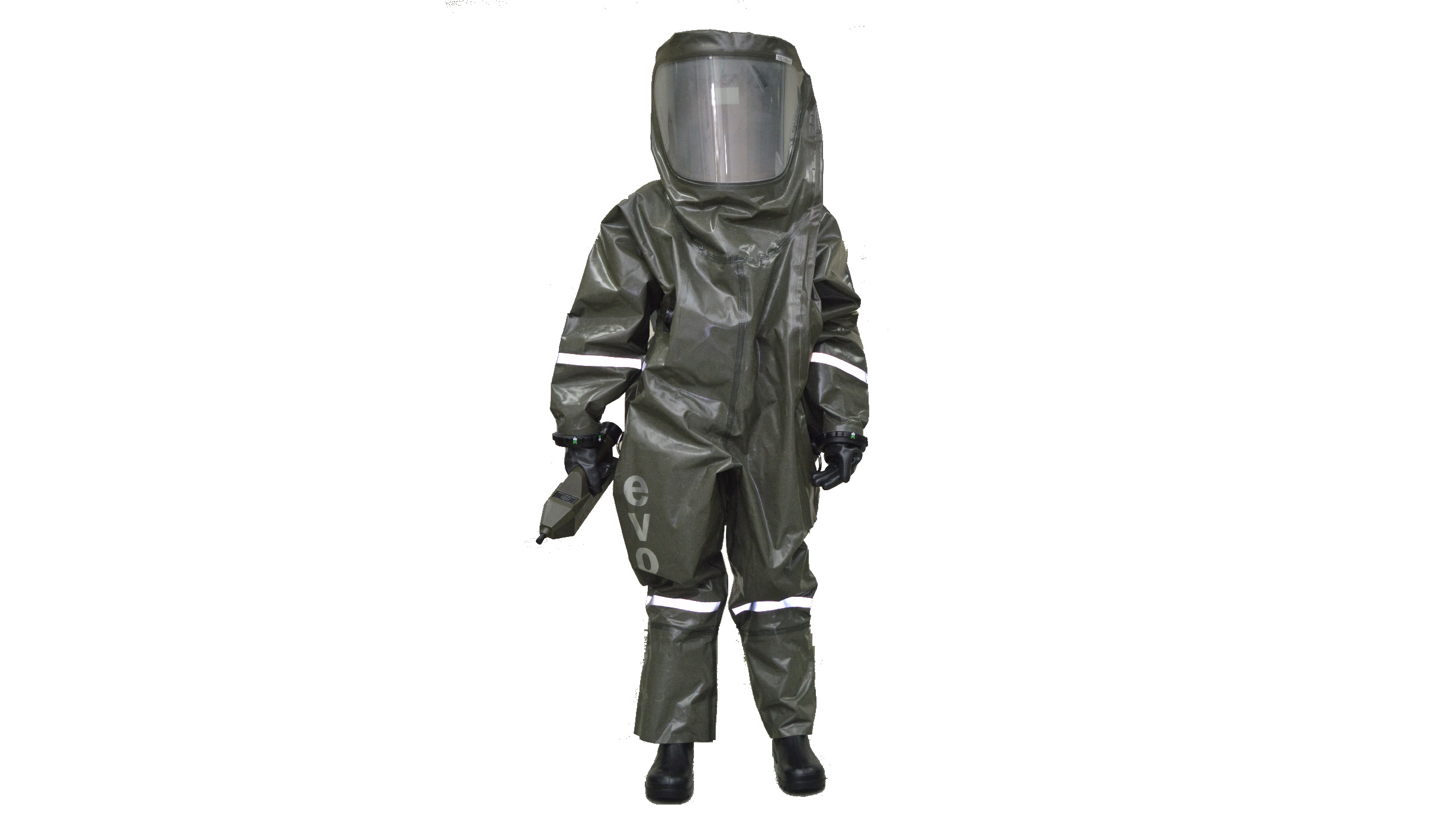
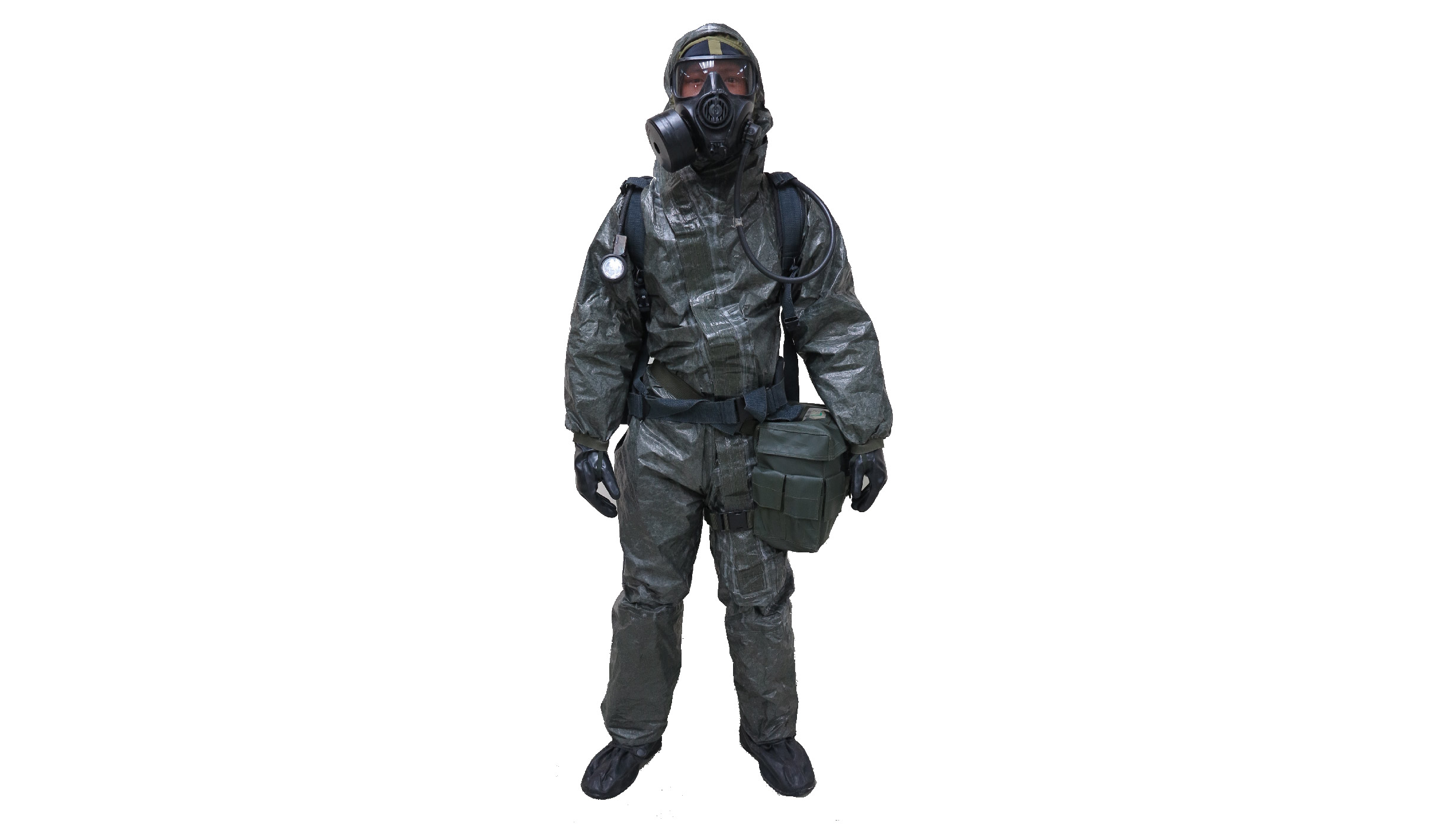
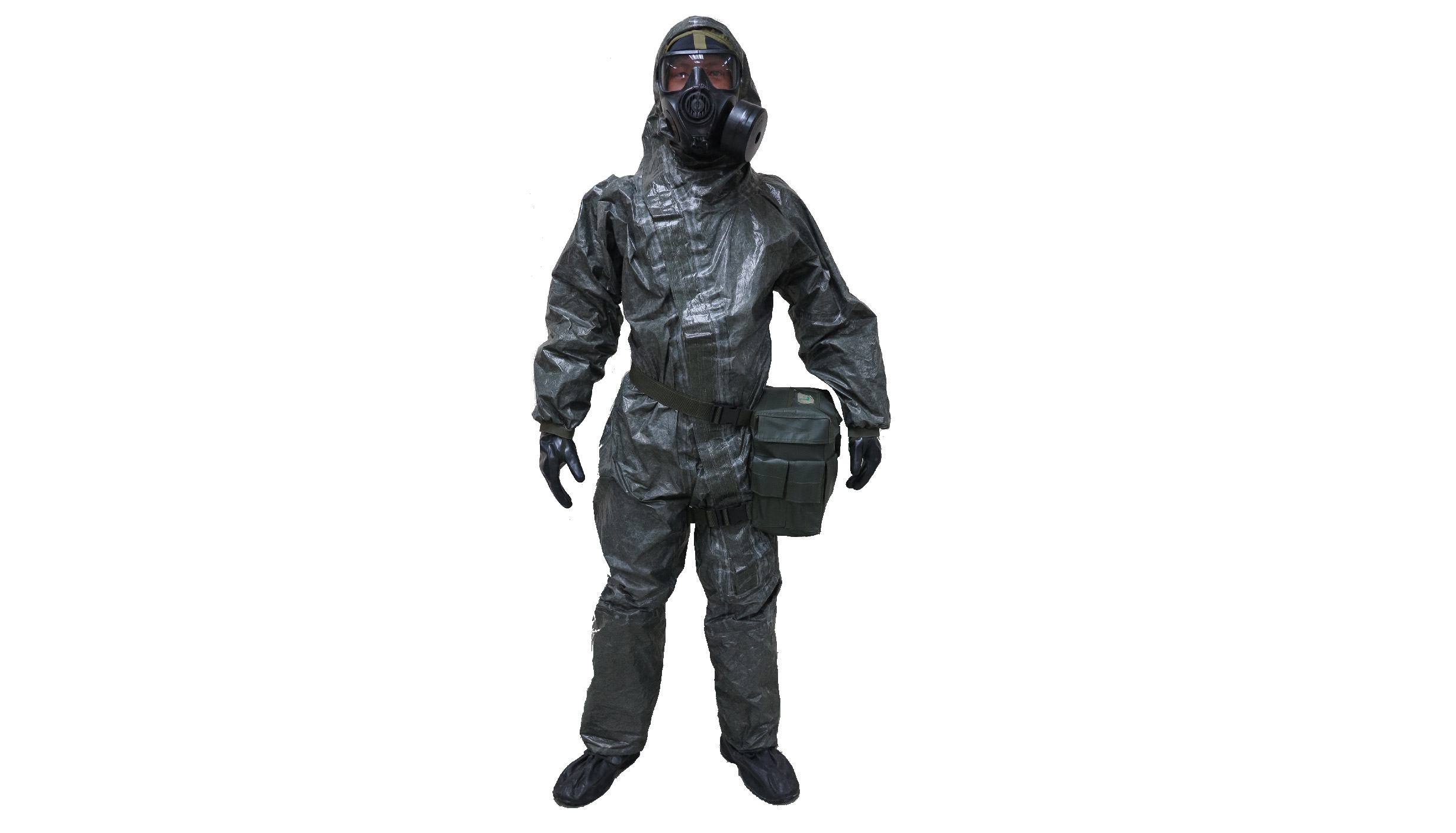
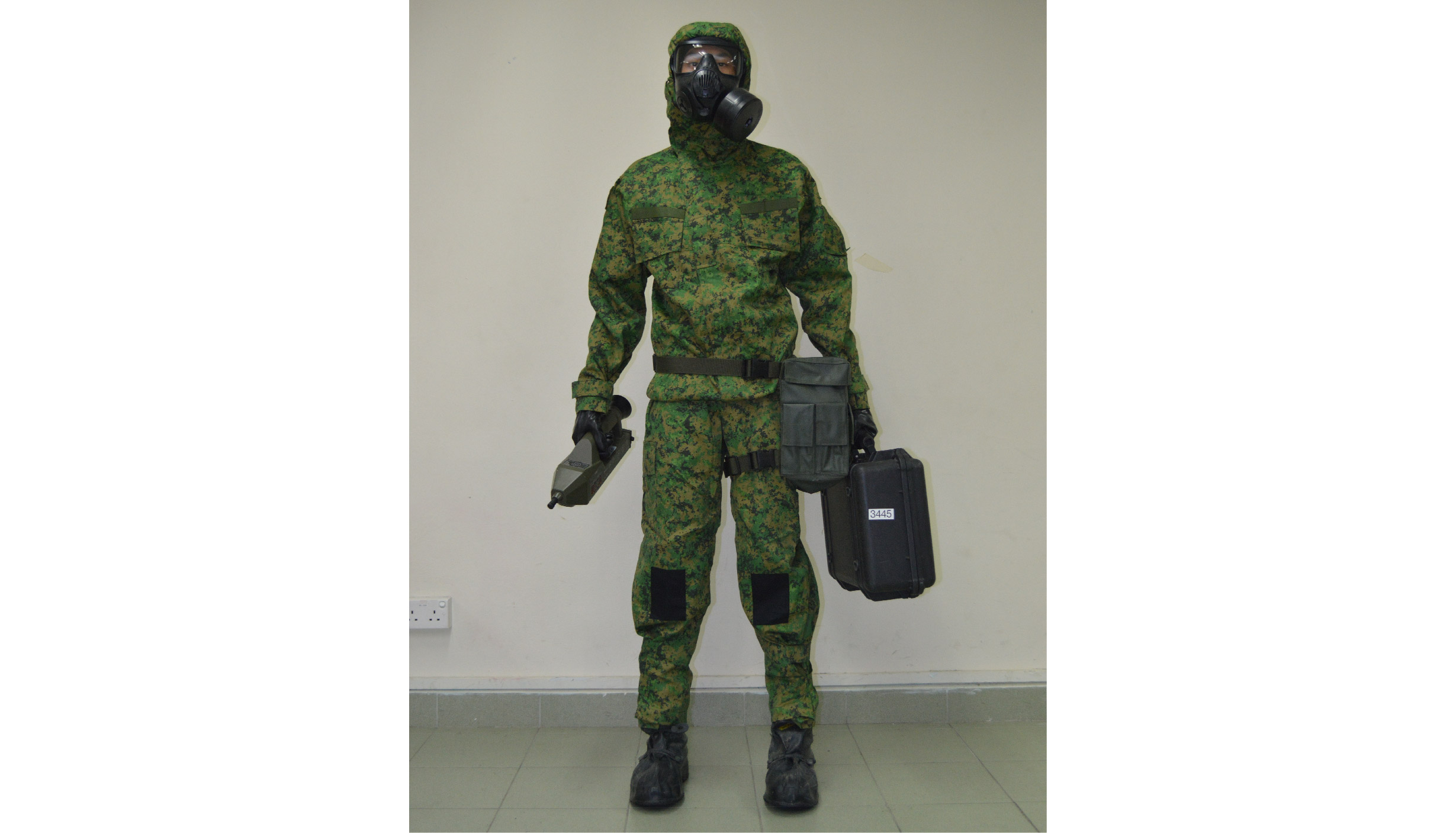
Role:
Provide assault-bridging capability up to 4m and 8m (using the extended set).
Technical Characteristics :
Standard Set
Class – 30
Max bridging capability – 4.0m
Laying time – 30 mins
Extended Set
Class – 30
Max bridging capability – 8.0m
Laying time – 60 mins
Role:
Clearing of anti-personnel and anti-tank mines with nett explosive quantity (NEQ) of 10kg TNT-equivalent, either dispersed on the road surface or buried up to 10 cm depth in the ground. It is capable of breaching a vehicle lane of width 3.5m in a single pass through minefields.
Technical Characteristics:
Weight – 18.56 tons
Height – 2.7m
Length – 9.18m
Width – 2.79m
Turning Radius (Transport Position) – 8.10m
Turning Radius (Mine Clearing Position) – 9.20m
Turning Radius (Auto-mine Clearing) – 18.0m
Class – 20
Max Speed – 35km/h
Flailing Speed – 400m/h to 600m/h
Sweeping Speed – 5km/h to 8km/h
Role:
Provide assault-bridging capability up to 4m and 8m (using the extended set). While similar with the HSTB 1 in terms of capability, the HSTB 2 is lighter in weight and can be employed more speedily than HSTB 1.
Technical Characteristics :
Standard Set
Class – 30
Max bridging capability – 4.0m
Laying time – 20 mins
Extended Set
Class – 30
Max bridging capability – 8.0m
Laying time – 30 mins
Role:
Organic to the Army, the FLB will be subordinated to the Divisions for wide-gap bridging within the shortest time. The FLB provides tactical support bridging capability up to 45 m.
Technical Characteristics
(Launching Vehicle):
Weight – 30 tons
Length – 11.1m
Width – 2.76m
Height – 39.8m
Crew – 12 men
Class – 60
Max Speed – 72 km/h (Road)
Max Speed – 15km/h (Off-Road)
Max Bridging capability – 45m
Bridge Roadway – 4.4m
Laying Time – 180 mins
Fuel – 400 litres
Role:
Provides assault-breaching capabilities by clearing infantry lane through minefields.
Technical Characteristics:
Launcher Unit:
Weight (with rocket motor) – 20.5kg (23.5kg)
Length – 0.96m
Launch Point – Approx. 10m from minefield
Launch Angle – 35 or 45 degrees
Container Unit:
Weight – 22.5kg
Length – 1.0m
Role:
Provide dozing and levelling, digging, compaction of soil over small area, loading of stores, breaking concrete and rocks, boring a hole in the ground, loading of soil/material.
Technical Characteristics:
Weight – 10 tons
Height – 3.53m
Length – 6.6m
Width (with bucket) – 2.45m
Class – 12
Crew – 1 men
Max Speed – 40 km/h
Role:
Provide an expedient Class 70 rafting and bridging capability.
Technical Characteristics :
Weight – 28.2 tons
Length – 13.4m
Width – 4.0m
Height – 4.0m
Crew – 4 men
Class – 30
Max speed (Road) – 80 km/h
Max speed (Water) – 14.8km/h
Operation Draught: 1.2m (1:10 gradient)
Loading Capacity – MLC 70
Turning Circle (2W Steer) – 42m
Turning Circle (4W Steer) – 24m
Role:
Clearing of anti-personnel and anti-tank mines dispersed on surfaces or buried up to 50mm depth in the ground. Automatic computerised flailing system and Kinetic Route Indicator System (KRIS) dispensing reusable marker rods on both sides of cleared path.
Technical Characteristics:
Weight – 27.8 tons
Height – 3.55m
Length – 7.9m
Width – 4.0m
Minimum Turning Radius – 9.9m
Pivot Turning Radius – 6.6m
Class – 30
Max Speed – 50km/h (Road)
25km/h (Cross-Country)
Role:
The L2-AEV is an organic asset of the Armoured Engineers Company (AEC) of the Armoured Brigade and the Armoured Battle Group (ABG) of the Combined Arms Division. It significantly enhances the tactical mobility of armoured forces by providing the capability to clear and open routes speedily.
Technical Characteristics:
Weight – 57.95 to 63.50 tons
Height – 3.53m
Length (Mine Breaching) – 14.02m
Length (Earthmoving) – 11.0m
Class – MLC 70
Width (Bare) – 3.55m / (Dozer Blade) – 4.0m
Width (LMS Deployed) – 4.43m
Max Range – 500k
Max Climb Gradient – 60%
Max Side Slope – 30%
Fording – 1.20 to 2.25m
Role:
Provides a fully automatic, responsive assault bridging capability up to 25m, enhancing tactical mobility of armoured forces. It is also capable of overcoming anti-tank ditches (ATD) and allowing armoured vehicles to cross over.
Technical Characteristics:
Weight – 72.3 tons
Length – 14.6m
Width – 4.01m
Height – 3.93m
Crew – 2 men
Class – 70
Max speed – 65 km/h
Max bridging capability – 25m
Bridge Roadway – 4.01m
Laying Time – <5 mins
Retrieving Time – <10 mins
Range – 400km
Role:
Provides responsive assault bridging capability up to 21m for MLC 30, enhancing tactical mobility of armoured forces.
Technical Characteristics:
Weight – 27.9 tons
Length – 11.2m
Width – 3.2m
Height – 3.3m
Crew – 2 men
Class – 30
Max speed – 45 km/h
Max Bridging Capability – 21m
Bridge Roadway – 3.2m
Laying Time – 8 mins
Retrieving Time – 10 mins
Range – 400km
Role:
Provide assault-breaching capability of vehicular obstacles such as ditches and craters.
Technical Characteristics:
Weight – 18.71 tons
Height (with anchor) – 3.41m
Length (Overall) – 7.3m
Width (with bucket) – 2.92m
Class – 20
Crew – 2 men
Max Speed– 50 km/h
Max swimming speed – 8.2 km/h
Bucket capabilities – 1.53m
Vertical obstacles climbing capability – 0.61m
Role:
Level A Protection is adopted when the greatest level of skin, respiratory, and eye protection is required.
Role:
Level B Protection is adopted when the highest level of respiratory protection is necessary but a lesser level of skin protection is needed
After the institution of the SAF in 1965, the Engineer Training Wing (ETW) was established in early 1967 at SAFTI, Pasir Laba Camp. In July 1967, the first two officers from the First Infantry Officer Cadet Course attend the Basic Engineer Officer Course in US Army Engineer School, returning home to build the foundation of the Engineers. As the Formation grew, the Engineers HQ was established in 1970 to serve as a centralised command, and was renamed the Headquarters SIngapore Combat Engineers (HQ SCE) three years later in 1973.
The Singapore Combat Engineers (SCE) was deployed in significant operations and missions throughout the years:
1974: Laju Hijack
Singapore’s first encounter with international terrorism where SCE was activated to neutralise improvised explosive devices.
1975: Operation THUNDERSTORM
SCE was activated to neutralise threats by ferrying Commandos to the Vietnamese boats that sailed into Singapore waters, and defusing the on board explosives.
1978: Bangladesh Bomb Disposal Assistance
SCE assisted in the disposal of a large ordnance unearthed within an industrial park which was later identified as an unexploded 500-pound aerial bomb.
1986: Hotel New World Disaster
SCE dispatched the earth-moving machines to aid in the rescue of people during the collapse of Hotel New World.
1990: UNIKOM
SCE participated in a UN Mission, forming an observer group of the United Nations Iraq-Kuwait Observation Mission.
1991: Hijack of SQ 117
SCE assisted in identifying explosive devices and rendering the aircraft free of explosives during the rescue.
2004: Operation FLYING EAGLE
SCE carried out disaster relief operations by clearing debris and establishing landing points for equipment and supplies during the earthquakes and subsequent tsunami in Sumatra.
2007: Operation BLUE RIDGE
Spanning 2007 to 2013, SCE was activated to provide humanitarian aid to war-torn Afghanistan by building infrastructures and training of the Afghan National Security Forces.
2009: Operation SWIFT LION
SCE carried out relief operations during the earthquake in Sumatra, constructing temporary clinics. In 2011, SCE was once again activated for humanitarian assistance and disaster relief after the earthquake in Christchurch.
Apart from being involved in numerous operations, the SCE also organised its first National Day Parade (NDP) during the nation’s Silver Jubilee in 1991 as well as subsequent NDPs in 1996, 2007, 2011 and 2017.
The Singapore Combat Engineers has a rich history of progress and development. The Singapore Combat Engineers has specialized units capable of providing Combat Engineering Combat solutions to support the full spectrum of operations in the SAF.
Advance and Overcome!


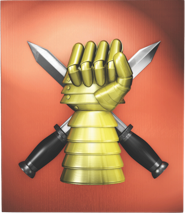
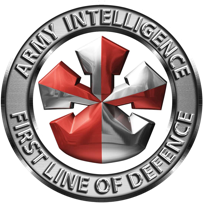
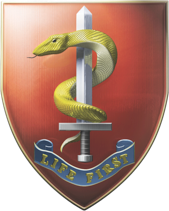
.png?sfvrsn=5f842510_1)
